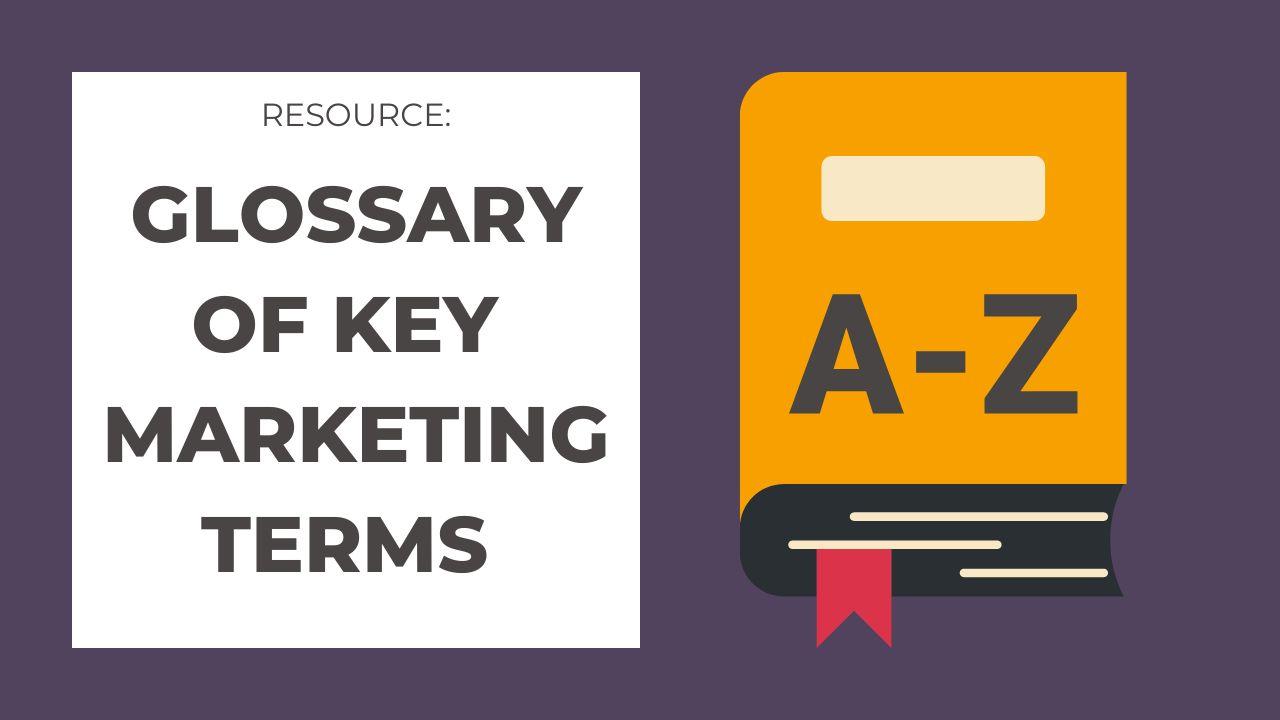Why do you need this glossary?
Marketing is an industry full of fancy words and complicated acronyms. We are trying to break the barrier between marketers and clients with this glossary of terms.
This glossary will help you understand the frequently used terms in marketing so you can feel confident when engaging with marketing content or when working with an agency that handles your marketing plans.
Inspiration for this post came from our latest podcast episode where Head Of Advertising, Astra Newton discusses all things charity ads grants and explains the process of setting up Google ads for non-profit organisations.
Listen to the full episode here
Our Glossary
Ad Groups – Ad groups are the groups your keywords are broken down into depending on their common themes. For example terms like ‘donate to charity’, ‘charity donations’ and ‘give money to charity’ would be in the same group whereas, ‘charity jobs’ would be in a separate ad group.
Analytics – Analytics is where you can make sense and draw business insights from all of the data collected from your website and any campaigns., This includes things like your click-through rate and indicates how well your campaign is doing.
BoFU – Bottom of the Funnel – Bottom-of-the-funnel activity encourages your audience to complete a purchasing decision, generating hot leads and conversions is the main purpose of bottom-of-the-funnel content.
CIC – Community Interest Company – A CIC is a special type of limited company which exists to benefit the community instead of private shareholders. Regulated by the CIC regulator
Click-through-Rate – Click-through-rate refers to the number of times an ad or link has been clicked as a percentage of the number of impressions it has received.
Cost per lead – The amount spent on acquiring a lead, mostly associated with paid advertising.
CPC – Cost Per Click – With paid advertising the cost per click on your advertisement can vary when targeting different keywords. Cost Per Click forecasts give you an idea of how much each click will cost so that you can adjust your budget and keyword choice accordingly
CRM – Customer Relationship Management – CRM systems are used to manage the relationship between the customer and the business they are interacting with. This includes being able to communicate with clients, hold contact information and track how a lead moves through your sales funnel.
CTA – Call To Action – Gives the audience member a clear option to take the next step e.g. Apply Now.
Google Ads Grants – £105,000 in free funding from Google is available to any charity that’s registered with the charity commission in the UK to advertise their services on Google.
Impressions – An impression is a count of how many times an advert has been displayed on a single device.
Inbound Marketing – a customer-centric approach to marketing which involves attracting the best-fit customers through blogging, social media posts and SEO. Inbound marketing is usually seen as a long-term investment compared to outbound marketing.
Keyword Research – When carrying out pay per click advertising you can target specific keywords or search terms. In order to choose which keywords fit your niche and budget, you can do keyword research. This will provide you with the typical cost per click, the search volume for those keywords and suggestions for other keywords you could include in your campaign.
KPI – Key Performance Indicator – Used to track progress towards marketing goals. Key performance indicators are set by marketers at the start of a campaign and measured throughout the campaign.
Landing Page – Landing pages are created to encourage a certain action. For example if you want your audience to invest in one of your services you could create a service-specific landing page and include information, testimonials and a strong offer with a clear CTA to purchase or start a sales call.
MoFU – Middle of the Funnel – Middle-of-the-funnel activity focuses on the users who are considering solutions to the problem they’re aware that they have. Middle-of-the-funnel content serves to educate the user on potential solutions to their problem.
Net Promoter Score – Measures how likely someone is to recommend your company to other people using a 1-10 scale. This scale is divided into three sections: Detractors (0-6), Passives (7-8) and Promoters (9+)
PPC – Pay Per Click – Advertisers pay every time their ad is clicked on. Specific keywords or search phrases can be targeted to increase the number of clicks an advertiser receives.
ROAS – Return on Ad Spend – This is revenue you’ve made back from advertising spend as a percentage of that advertising spend for example +20% ROAS means the ad spend has been paid for by the revenue it has brought in PLUS an extra 20% of that ad spend in revenue.
ROI – Return on Investment – This is the revenue of a campaign as a percentage of the entire investment involved. It is calculated by subtracting the initial cost of the investment from its final value, then dividing this new number by the cost of the investment, and finally, multiplying it by 100.
ToFU – Top of the Funnel – Top-of-the-funnel activity helps to generate awareness for your company. Top-of-the-funnel content is used to build a relationship with your audience and rarely leads to direct sales.
We will continue to ad to this list of terms as new terms arise and as we move forward with our Google Ads Grants campaign and understand what our clients need from us in the future.
Next Post



